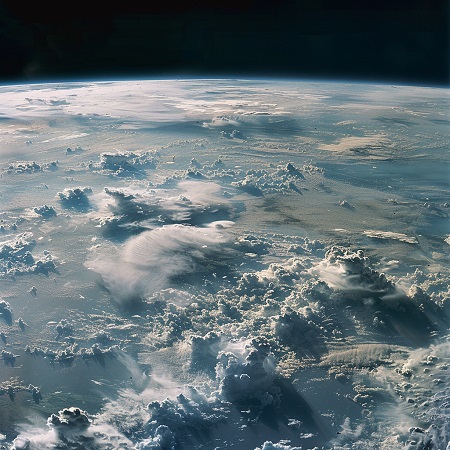From Dr. Zoomie: Recently, the esteemed scientific journal Science published a remarkable paper in which the authors reconstructed 485 million years’ worth of average global temperatures, sketching out a history of climate change that goes back nearly a half-billion years. Given the prominence of climate change in our national dialogue, and in personal and family decisions (e.g. should my next car be electric?) Even though it’s not directly related to radiation or nuclear issues, I wanted to discuss some of the paper’s findings, why I believe the science can be trusted, and some of the lessons we might be able to take from it.
Think of a plank, half of it sticking out over a cliff with a 500-pound stone sitting at the opposite end. Picture placing a 10-pound weight at the end of the part hanging over the abyss. Does anything happen? Of course not – it’s going to take a lot more than 10 pounds to get the plank to start to tip. We can put another 49 weights at the far end of the plank and still it looks stable. And then…another weight, a bird landing, even a deep sigh can be enough to tip the balance, sending the plank into an accelerating tilt, stones large and small beginning to slide, and then to 50 small weights and one large one plunging over the edge, along with the plank itself. Place enough stress at the right point and even a stable system will begin an accelerating slide. We’ll come back to this bye and by.
The latest issue of the journal Science has a wonderful paper in which a number of scientists describe how they assembled a timeline showing how Earth’s average global temperature has changed over the eons – the last 485 million years, to be precise. Scientists have worked on this sort of thing before; what sets this paper apart is that it produces the most robust such timeline yet, based on more than one calculational methodology and a very large number of samples. What they did was to look for papers reporting on the amount of a heavy stable isotope of oxygen (O-18) in various kinds of rocks, minerals, and fossils. The short version is that cold water holds more O-18 than does warm water, so a rock that formed in the water and that has higher levels of O-18 likely formed in cooler water than did a rock with lower levels of O-18. As the water temperature rises there’s more energy to push the heavier O-18 atoms into the air. By collecting this sort of information from over 80 papers reporting on nearly 6000 samples from all over the globe, spanning the last 485 million years the authors (no doubt assisted by at least a few graduate students) have assembled a timeline of Earth’s average temperature over this period. It has some surprises – here’s a short summary of some of the paper’s findings.
- Over this period of time, the average global temperature today (about 14° C, or 57° F) is unusually low; there have only been two times in which temperatures have been lower than what we have today.
- The average global temperature has varied from about 11-36° C (52- 97° F) with 31% of that interval spent in cold (11-18°C) and cool (18-22° C) conditions, 41% of the time and 41% of the time in warm (25-28° C) or hot (28-36° C) conditions. A further 27% of the time was spent between the cold/cool and warm/hot states (22-25° C).
- Today’s average temperature puts Earth squarely in the cold category
- There are at least two mass extinctions that are associated with large rapid changes in global temperatures
- About 440 million years ago temperatures plunged by 7° C in just a few million years, launching a brief ice age and the Ordovician mass extinction
- Just to make things more interesting, Adrian Melott (an astrophysicist I’ve written about before) thinks that the Ordovician extinction might have been the result of a called nearby exploding star* called a gamma ray burst
- Nor do two other large, abrupt temperature increases seem to be correlated with any mass extinction.
- About 440 million years ago temperatures plunged by 7° C in just a few million years, launching a brief ice age and the Ordovician mass extinction
This suggests two main things: 1) our planet is normally much warmer than worst-case global warming scenarios; a global temperature of about 17° C, which is still in the “cold” stage noted in this paper, and 2) there are at least four times during which temperature shot up or down abruptly for reasons that are cannot yet be guessed at.
The first of these suggests that our planet can end up a lot hotter than our current projections would have us think. The second suggests that, just as a heavy sigh might tip the balance on a massive rock, a relatively minor change in any of a number of parameters – the Sun’s energy output, the amount of greenhouse gas in our atmosphere, the amount of water flowing through the Gulf Stream, the amount of ice in the Arctic Ocean, or any of a number of other things – might take us just past that tipping point, launching Earth into a hothouse that would make the hot summers of the last few years seem like a cool Spring day, or that could launch an ice age.
And the thing is, we don’t know what might be the trigger or how close we might be to the tipping point. This is what we need to try to learn.
